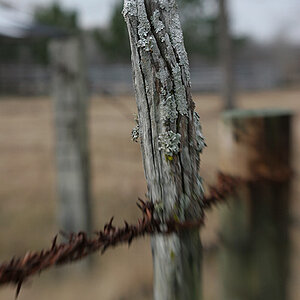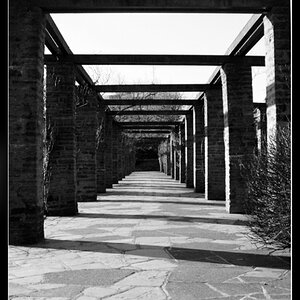myfotoguy
TPF Noob!
- Joined
- Feb 15, 2010
- Messages
- 856
- Reaction score
- 2
- Location
- Minnesota
- Can others edit my Photos
- Photos OK to edit
"So you're saying that my lens will prevent me from shooting in an aperture outside f/3.5 - f/5.6? Is that correct? I only ask because in the past i've taken pictures and the Exif data shows f/10and f/11. So it's a bit confusing. Enlighten me if you will."
Read part 2 of my article series for more, I am not sure I am articulating very well right now. But start with part 1: Myfotoguy: The Exposure Triangle (Myfotoguy Series on Exposure Part 1 of 5)
The smaller the aperture number is, the larger the opening of the lens is.
The larger the aperture number is, the smaller the opening of the lens is.
Your lens will not open any larger beyond 3.5-5.6 (it won't go to a smaller number). F/11 is a smaller aperture, the lens can go to smaller size openings, it's just limited in how big the opening will be.
I think you may want to read some basic stuff to lay some groundwork and foundation before getting too confused by short replies in a forum. Like i said, I'm probably not explaining it well right now.
------
"how would I have seen this? What meter should I be looking at in the viewfinder?"
I think there should be an illustration in your manual. It has a zero in the center, a "+" on one side of the meter and a "-" on the other side.
Read part 2 of my article series for more, I am not sure I am articulating very well right now. But start with part 1: Myfotoguy: The Exposure Triangle (Myfotoguy Series on Exposure Part 1 of 5)
The smaller the aperture number is, the larger the opening of the lens is.
The larger the aperture number is, the smaller the opening of the lens is.
Your lens will not open any larger beyond 3.5-5.6 (it won't go to a smaller number). F/11 is a smaller aperture, the lens can go to smaller size openings, it's just limited in how big the opening will be.
I think you may want to read some basic stuff to lay some groundwork and foundation before getting too confused by short replies in a forum. Like i said, I'm probably not explaining it well right now.
------
"how would I have seen this? What meter should I be looking at in the viewfinder?"
I think there should be an illustration in your manual. It has a zero in the center, a "+" on one side of the meter and a "-" on the other side.


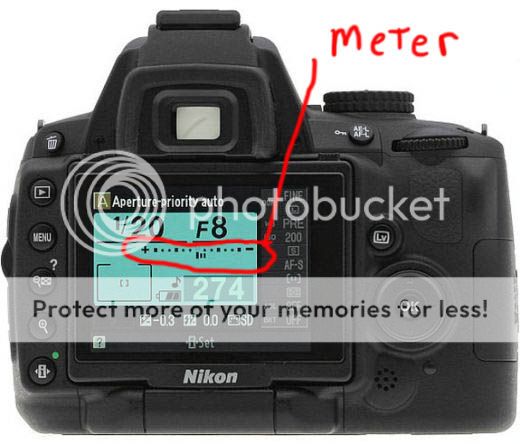
![[No title]](/data/xfmg/thumbnail/34/34074-6a0944aed6e17bffefb06aa0a3d41840.jpg?1619736266)



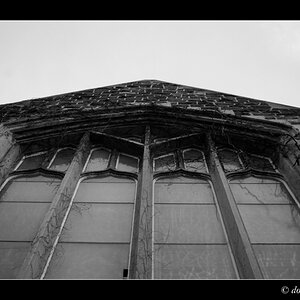
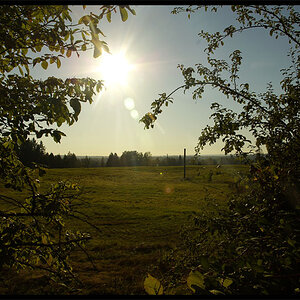
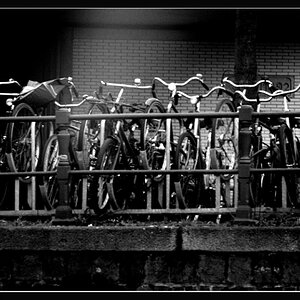
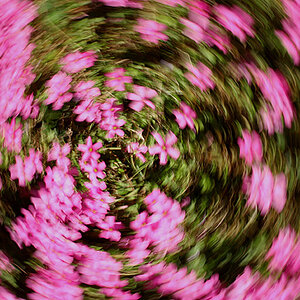
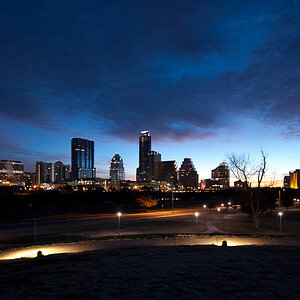
![[No title]](/data/xfmg/thumbnail/36/36099-feb952513e45dbf9f061ab28c1dc1121.jpg?1619737342)
